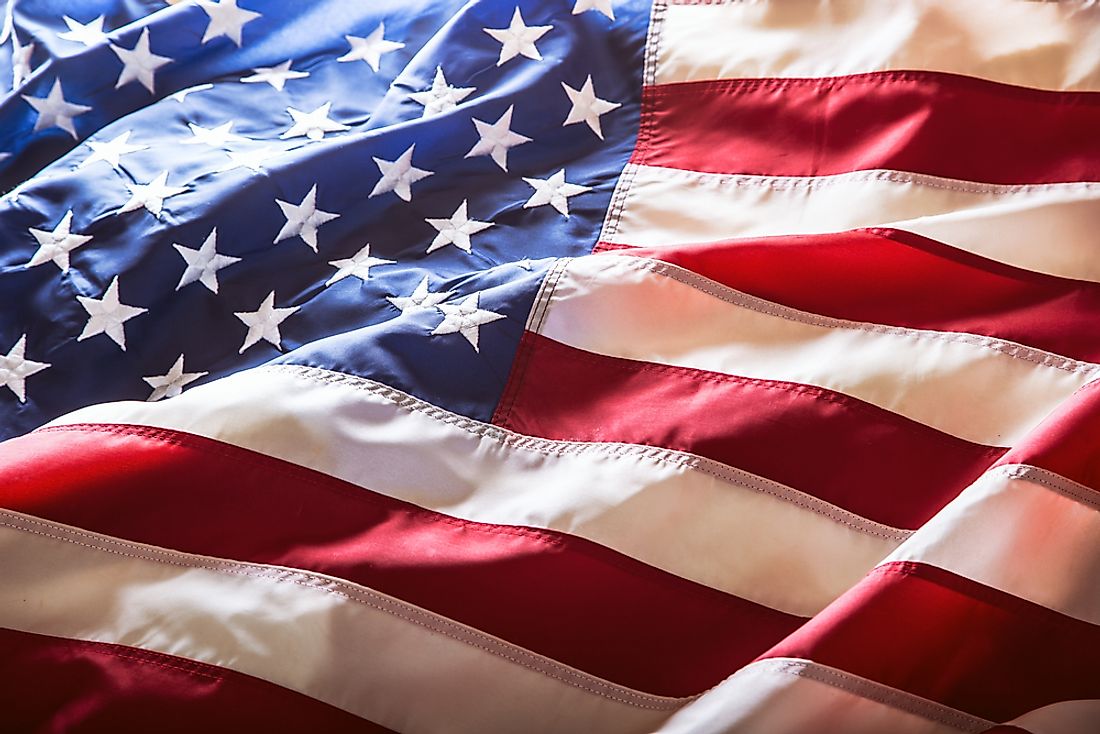How Many Stars Are on the American Flag?

The American flag, also nicknamed the Star-Spangled Banner or Old Glory, has thirteen stripes of white alternating with red (bottom and top), and a blue canton with fifty white 5-pointed stars which are arranged in nine horizontal rows. The thirteen red and white stripes represent the thirteen colonies which gained their independence from Britain and became the first American states. The fifty white stars represent all the fifty American states. The original thirteen stars American flag was adopted on June 14, 1777.
The History of the American Flag
After gaining their independence in July 1776, the continental congress which was governing the thirteen states during the American Revolution adopted the Grand Union flag as the first American flag. The United States used it until June 14, 1777, when the flag resolution was approved which stated that the American flag should have thirteen red and white bands with thirteen white stars on a blue rectangle symbolizing a new constellation. The 13-stars flag was officially flown for the first time at Fort Schuyler on August 3, 1777. The resolution did not specify the arrangement of the stars or dictate that the flag should have seven red and six white. The continental congress left the details to the designer, which resulted in numerous flag designs with different star arrangements with the famous one being the Betsy Ross flag. Francis Hopkinson designed the first American flag with the thirteen stars arranged in a row in 1777.
Later Flag Acts
The number of stars and stripes on the flag increased to fifteen after the Kentucky and Vermont became part of the United States and became official on May 1, 1795. The fifteen-star flag inspired Scott Key to write the current American national anthem. A plan was passed on April 4, 1818, to reduce the number of stripes to thirteen and increase the number of stars on the flag with every admission of a new state as per Captain Samuel Reid’s suggestion. The act specified that the new flag becomes official on July 4 of the year when a new state gains statehood. The twenty-star flag was adopted on July 4, 1818, after Tennessee, Ohio, Mississippi, Louisiana and Indiana gained statehood.
Before the United States adopted the 48-stars flag they had no official arrangement for the stars on the canton, and throughout the nineteenth century, there were many flag designs with various star patterns. The recent flag change was done in 1959 and 1960 after Alaska and Hawaii gained statehood becoming the forty-ninth and fiftieth states respectively. The longest used American flag design is the current 50-stars design which has been flown since 1960, followed by the 48-stars design which was used for forty-seven years.
The Future of the American Flag
Puerto Rico held a statehood referendum in November 2012, but the legitimacy of the election was disputed. They held another referendum on June 11, 2017, and even though over 97% of the people approved the idea of statehood, only 23% of the registered voters participated. Washington DC held a referendum election in November 2016, and 86% of the voters approved the proposal. Therefore there is a possibility of both Washington DC and Puerto Rico gaining statehood, and this will means two more stars will be added on the flag, but their applications to the Union requires congressional approval.







